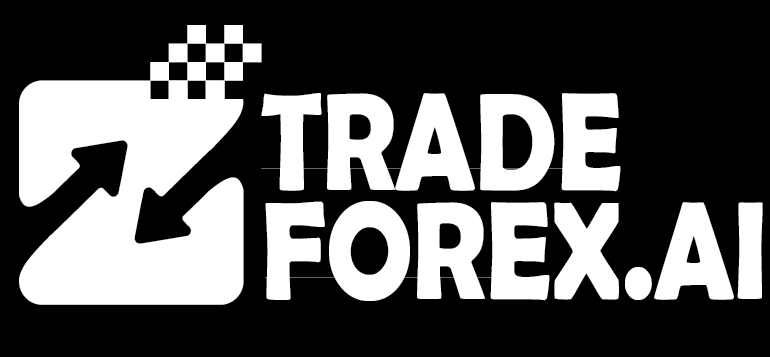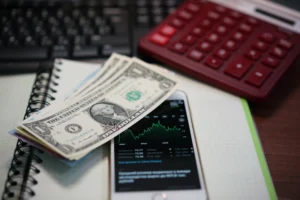The cash-and-carry trade is one of the most well-known arbitrage strategies in global financial markets. It allows traders to profit from price differences between the spot market and the futures market without taking significant directional risk. The method is straightforward in theory but requires precision in execution.
In its simplest form, a cash-and-carry trade involves purchasing an asset in the spot market and simultaneously selling the same asset in the futures market at a higher price. This locked-in price difference becomes the trader’s profit after accounting for all associated costs. The technique is used in commodities, currencies, and even cryptocurrencies.
The popularity of this approach comes from its market-neutral nature. Since both sides of the trade are opened at the same time, traders are not betting on whether prices will rise or fall. Instead, they are exploiting an existing imbalance between two related markets. In favourable market conditions, particularly during contango in futures markets, it can offer risk-free arbitrage opportunities.
How a Cash-and-Carry Trade Works
A cash-and-carry trade starts with the identification of an asset whose futures price is trading above its spot price. For example, if gold is priced at 1,900 dollars per ounce in the spot market but a six-month futures contract is priced at 1,950 dollars, there is a 50-dollar difference. If the cost of storing and financing gold for six months is only 20 dollars per ounce, the trader can lock in a profit of 30 dollars per ounce by executing the trade.
The process is simple in steps but requires careful timing. First, the trader buys gold in the spot market. At the same time, they sell a gold futures contract at the higher price. Over the contract period, the gold is stored and insured. At maturity, the trader delivers the gold to settle the futures contract, collecting the pre-determined profit.
This process can be replicated across markets. In currency trading, a trader might buy US dollars in the spot market and sell a futures contract when there is a favourable interest rate differential. In cryptocurrency markets, traders often buy Bitcoin spot and sell Bitcoin futures during periods of strong futures premiums.
Why Contango Creates Opportunities
A key market condition that makes the cash-and-carry trade profitable is contango in futures markets. Contango occurs when the futures price of an asset is higher than its current spot price. This usually happens when investors expect the asset to rise in value over time or when carrying costs push up the futures price.
For instance, in oil markets, futures contracts often trade at a premium to spot prices because of storage and financing costs. This premium, when larger than the actual cost of carrying the asset, creates a window for futures arbitrage trading. By buying oil now and selling it at a higher futures price, traders can generate profits with minimal exposure to market volatility.
Traders actively monitor markets for periods of strong contango because they present the best conditions for risk-free arbitrage opportunities. However, they must remain aware of any sudden market shifts, as contango can quickly turn into backwardation, eliminating profits or causing losses.
Costs Involved in a Cash-and-Carry Trade
While the profit from a cash-and-carry trade may seem straightforward, ignoring the cost side of the equation can be dangerous. Carrying an asset until the futures contract matures involves several expenses. These include storage costs for physical commodities, financing costs if the purchase is made with borrowed capital, insurance costs for valuable goods, and transaction fees in both spot and futures markets.
In currency markets, carrying costs are replaced by interest rate differentials between the two currencies involved. If the interest rate earned on the purchased currency is less than the cost of holding it, the profit margin decreases. In cryptocurrency markets, the equivalent costs might include exchange withdrawal fees, funding rates, and custody expenses.
Accurately calculating these costs before entering a trade is critical. Even small errors can erase profits, especially in high-frequency futures arbitrage trading where margins are thin.
The Role of Liquidity and Timing
Liquidity is a critical factor in the success of a cash-and-carry trade. Both the spot market and the futures market must have enough trading activity to allow for the immediate execution of large orders without significantly impacting prices. Thinly traded markets can cause slippage, which reduces or even eliminates the expected profit.
Timing is equally important. Futures prices fluctuate throughout the day, and the price difference between spot and futures markets can shrink quickly. Traders who hesitate or face delays in execution may find that the arbitrage opportunity disappears before they complete both sides of the trade.
Many professionals rely on automated trading systems to identify and execute cash-and-carry opportunities instantly. These systems can scan multiple exchanges, calculate costs, and open positions in seconds. In fast-moving markets, this speed often determines whether a trade is profitable.
Commodity Market Examples
Commodity markets have long been a fertile ground for the cash-and-carry arbitrage strategy. Gold, silver, crude oil, and agricultural products frequently trade in contango, providing profitable opportunities for traders who can manage the logistics.
Take the case of crude oil. Suppose the spot price is 70 dollars per barrel, while the six-month futures price is 75 dollars. If storage and insurance for six months cost 3 dollars per barrel and financing costs another 1 dollar, the net profit per barrel is 1 dollar. While this might seem small, traders dealing with thousands of barrels can generate substantial gains with minimal risk.
The same logic applies to precious metals like gold and silver. Large institutions often buy physical metal, store it in secure vaults, and sell futures contracts at a premium. As long as the carrying costs remain below the futures premium, the trade is profitable.
Currency Market Applications
In currency markets, the cash-and-carry trade takes a slightly different form but follows the same principle. Traders buy a currency in the spot market and sell a futures or forward contract when the futures price reflects favourable interest rate differentials.
For example, if the USD/JPY spot rate is 140.00 and the three-month futures contract trades at 141.00, the one-yen difference may present an opportunity. If the cost of borrowing yen and holding dollars is less than the profit from the futures premium, the trader can execute a profitable trade.
These opportunities often arise when central banks maintain different interest rate policies. A high-interest currency bought in the spot market can yield additional returns when sold in the futures market at a premium.
Cryptocurrency Market Potential
Cryptocurrency markets are relatively new but have quickly become one of the most active areas for cash-and-carry trade opportunities. High volatility, strong retail participation, and frequent periods of contango make crypto futures arbitrage trading particularly attractive.
For instance, Bitcoin often trades at a premium in futures markets, especially during bull runs. If Bitcoin is priced at 40,000 dollars in the spot market and the one-month futures contract is priced at 41,200 dollars, a trader can lock in a 1,200 dollar profit per Bitcoin before costs. Given that many crypto exchanges allow for fractional positions, even smaller traders can participate in this strategy.
However, crypto carries unique risks. Exchange hacks, sudden liquidity drops, and funding rate changes can all impact profitability. Traders must stay informed about platform policies and market conditions to avoid unpleasant surprises.
Common Risks and How to Manage Them
Despite being considered market-neutral, the cash-and-carry trade is not without risks. One major risk is the sudden shift from contango to backwardation. If futures prices drop below spot prices during the holding period, traders may face losses when closing their positions.
Other risks include unexpected increases in carrying costs, counterparty risk in over-the-counter agreements, and liquidity risk in less active markets. In cryptocurrency markets, regulatory changes or sudden exchange suspensions can also disrupt trades.
Risk management starts with accurate cost calculations, diversification across different markets, and continuous monitoring of market conditions. Many traders also set stop-loss levels even in arbitrage strategies to protect against unforeseen events.
Real-World Case Studies
In 2020, during the oil market collapse, crude oil futures prices diverged significantly from spot prices. Traders with available storage capacity executed large-scale cash-and-carry trades, locking in significant profits as futures remained in contango for months.
Similarly, in the cryptocurrency market of early 2021, Bitcoin futures on some exchanges traded at more than a 10 per cent premium over spot prices. Professional traders bought Bitcoin spot, sold the inflated futures contracts, and earned double-digit returns with minimal market risk.
These examples show that the strategy works across asset classes and can be applied in diverse market conditions. The key is preparation, timing, and execution.
Conclusion
The cash-and-carry trade remains one of the most reliable methods for generating steady profits from market price differences. It thrives in conditions of contango in futures markets and can be applied to commodities, currencies, and cryptocurrencies.
By understanding the mechanics of the cash-and-carry arbitrage strategy, factoring in all carrying costs, and acting quickly when opportunities arise, traders can tap into risk-free arbitrage opportunities that require little exposure to market direction. While the strategy is not without challenges, disciplined execution and constant monitoring can make it a valuable part of any professional trading toolkit.
For traders in 2025, the combination of global commodity flows, shifting interest rate environments, and volatile cryptocurrency markets means cash-and-carry opportunities will continue to appear. The traders who recognise them quickly and act with precision will be the ones who benefit most.
Read here to learn more about “Improving Risk to Reward Ratio Without Changing Your Strategy“.

I’m Chaitali Sethi — a seasoned financial writer and strategist specializing in Forex trading, market behavior, and trader psychology. With a deep understanding of global markets and economic trends, I simplify complex financial concepts into clear, actionable insights that empower traders at every level. Whether it’s dissecting winning strategies, breaking down market sentiment, or helping traders build the right mindset, my content bridges the gap between information and implementation.




